The rise of ghost kitchens – delivery-only restaurant facilities with no dine-in space – has reshaped the food industry in recent years. During the pandemic, ghost kitchens boomed as restaurants pivoted to off-premise dining.
By 2025, the initial hype has cooled and the industry has consolidated, but a few key players still dominate the U.S. ghost kitchen landscape.
This article identifies the top 4 ghost kitchen companies in the United States as of 2025 and analyzes each in detail. We compare their financial performance, market share, innovation, geographic reach and what they offer job seekers – including employment opportunities, in-demand roles, workplace culture and any unique benefits or programs.
Comparison of Top 4 Ghost Kitchen Companies (U.S. as of 2025)
The table below summarizes key metrics and features of the four leading ghost kitchen brands discussed:
| Company | Est. 2024 Revenue | Employees (Approx.) | U.S. Presence (Locations) | Notable Innovations | Hiring Outlook (2025) |
|---|---|---|---|---|---|
| CloudKitchens (City Storage Systems) | ~$1.1 B (est.) | ~450 corporate (plus thousands of restaurant tenant staff indirectly) | Dozens of facilities in major metros (400+ globally) | Advanced order aggregation software (Otter); large-scale kitchen networks; secretive but efficient operations | Moderate – continuing expansion cautiously; hiring in tech, sales, and facility ops (after 2023 layoffs) |
| REEF Technology | Not disclosed (heavy VC funding >$1B) | 1,000+ (peak ops staff; reports of up to 10k incl. global) | Multi-city (50+ cities; hundreds of kitchen trailers at peak) | Mobile kitchen “vessels” in parking lots; multi-brand cooking per unit; pivoting to tech licensing and franchise operator model | Mixed – some downsizing of kitchen staff (lost big contracts); focusing on tech and partner roles rather than direct hires |
| C3 (EveryBody Eats) | Not disclosed (private) | 300+ (combined across C3, Nextbite, KU) | 1,000+ host kitchen touchpoints (brand presence); owned sites in ~10 states | Portfolio of 40+ virtual brands; omnichannel approach (delivery, food halls, hotel room service); integration of multiple platforms (Nextbite tech, KU IP) | Strong – growing platform with recent acquisitions; hiring in culinary development, brand management, tech, and partner support roles |
| Ghost Kitchens International (Ghost Kitchen Brands) | Not disclosed (private) | Few hundred (expanding with franchises) | ~20+ U.S. locations by 2023; adding 30–40 in 2024 (Walmart-based sites in many states) | Multi-brand single kitchens; retail store partnerships; use of kitchen robotics (automated baristas/fryers) | High – aggressive expansion via franchising; demand for cooks, managers at new sites and corporate trainers to support growth |
1. CloudKitchens (City Storage Systems)

Overview
CloudKitchens, founded in 2016 by Uber co-founder Travis Kalanick, is one of the largest ghost kitchen platforms globally. It operates as a “kitchens-as-a-service” provider, offering turnkey kitchen spaces and technology to restaurateurs.
CloudKitchens has raised over $1.3 billion (including a major $850M round in 2021 at a $15B valuation) and reportedly generated around $1.1 billion in revenue in 2024 (unverified). This makes it a financial heavyweight in the industry.
The company remains private and profitable metrics are not publicly confirmed, but it’s clearly a market leader by scale.
Market Share & Geographic Reach
CloudKitchens has an extensive U.S. presence, with ghost kitchen facilities in many major cities (Los Angeles, New York, Chicago, Dallas, San Francisco Bay Area, and more). Globally, it boasts 400+ locations across 110 cities in 30 countries, each site containing 20–30 kitchen units.
In the U.S., CloudKitchens locations (often branded as local “food halls” or “food hubs”) host hundreds of virtual restaurants. The platform has attracted big-name restaurant brands – Chick-fil-A, Wendy’s, Taco Bell, Little Caesars, etc. – which use CloudKitchens sites to enter new markets without building new stores.
This broad reach likely gives CloudKitchens the largest U.S. market share among ghost kitchen providers in terms of kitchen count and order volume.
Innovation
CloudKitchens distinguishes itself with a strong technology stack and operational efficiency focus. Its software arm, Otter, aggregates orders from delivery apps and streamlines kitchen operations.
By 2024, an estimated 18% of all U.S. online food delivery orders were processed through Otter’s software – an impressive footprint in restaurant tech. CloudKitchens positions itself as the “AWS of food,” aiming for an automated, hyper-efficient backend for digital restaurant brands.
It has even launched an in-house virtual brands program (Future Foods) that provides partner restaurants with turnkey delivery-only brand concepts. While CloudKitchens focuses heavily on software and real estate optimization rather than robotics, its integration of ordering platforms and data analytics is cutting-edge.
The company has been highly secretive under Kalanick’s leadership – it rarely gives press interviews and even prohibited employees from listing their employer on LinkedIn – indicating a unique (if opaque) internal culture geared toward stealth and rapid execution.
Employment Opportunities
For job seekers, CloudKitchens offers roles on the corporate and operations side.
It employs around 450 employees (as of 2025) in areas like sales (to recruit restaurant tenants), account management, facility operations, and software engineering. Because CloudKitchens primarily leases kitchen space to restaurant operators, it does not directly hire large numbers of chefs or kitchen staff – those roles belong to the restaurant brands renting the kitchens.
Instead, CloudKitchens hires for positions such as site managers (to run each kitchen facility), maintenance and logistics coordinators, customer success managers (to support tenant restaurants), and developers for its tech platforms.
The company’s culture has been described as fast-paced and secretive, reflecting its startup nature and Kalanick’s influence. News reports have noted high turnover among its tenant restaurants (65% churn within a year at some locations) due to operational challenges, and CloudKitchens itself went through a round of staff layoffs in late 2023 amid industry downsizing.
This suggests that while CloudKitchens is a top player, it’s also in a period of readjustment – job seekers may find opportunities in its tech and real estate divisions, but should be prepared for a dynamic environment.
Unique benefits are not public, but as a well-funded tech startup it likely offers competitive pay and the chance to work on cutting-edge foodtech projects at scale.
2. REEF Technology
Overview
REEF Technology (often just called “Reef”) took a different path into ghost kitchens – it started as a parking lot management company and transformed urban parking lots into multi-purpose logistics hubs. Food delivery kitchens became a major part of its business.
Backed by SoftBank’s Vision Fund and others, REEF raised around $1+ billion (including a $700M round in late 2020) to fuel its expansion. Reef’s strategy was to deploy mobile kitchen trailers (“vessels”) on underutilized parking spaces, offering turn-key cooking facilities and even staffing to restaurant brands.
By mid-2021, REEF had grown from 100 to 320 active kitchen vessels globally, serving both proprietary virtual brands and licensed menus from established chains.
However, profitability proved challenging. Reef’s financial performance hasn’t been disclosed in detail, but reports indicate high cash burn and recent valuation around $1B (down from initial expectations). The company has been consolidating and redefining its model through 2024.
Market Position & Reach
At its peak, REEF claimed a network of thousands of sites – 5,000+ locations in its network by 2021 (mostly parking lots) – though only a few hundred contained kitchen pods. Reef quickly established a presence in over 50 cities across North America and even internationally, making it one of the largest ghost kitchen operators by geographic footprint.
It aggressively partnered with well-known chains: for example, Wendy’s struck a deal in 2021 to open 700 delivery-only Wendy’s units via REEF by 2025. (That deal was later scaled down – Wendy’s slashed the plan by ~550 units after performance issues.)
Reef also launched or hosted numerous virtual brands, including celebrity-backed concepts like DJ Khaled’s “Another Wing” chicken brand and chains like TGI Fridays (which planned 300 delivery sites with Reef). By 2025, Reef’s market share in the U.S. has contracted somewhat – many initial partners (Wendy’s, Burger King, Jack in the Box) pulled back or ended partnerships due to operational and quality challenges.
Still, Reef remains a top player with hundreds of kitchen units in operation, focusing on high-density cities such as Miami (its HQ), Los Angeles, New York, and others where its model of proximity can add value. It’s also exploring alternate venues like airports and stadiums for growth.
Innovation
Reef’s innovation lies in its real estate and operational model. It pioneered the idea of “parking lot kitchens”, essentially drop-in shipping container kitchens that can be relocated as needed. This flexible infrastructure allowed rapid expansion and re-deployment – Reef touted the ability to move underperforming units to better locations easily.
Reef also took on the complexity of running kitchens itself: it often staffed and operated the kitchens, producing food for multiple brands from one vessel (a single Reef kitchen might cook pizzas, burgers, and wings for different virtual brands simultaneously).
This multi-brand operational model was ambitious, though it led to some legal and licensing woes (several Reef units were cited for local health and permit violations). In response, Reef is pivoting its strategy in 2025 – rather than purely operating kitchens, it’s focusing on licensing its technology and platform to other operators (such as in airports, malls, or to franchisees).
Essentially, Reef is evolving into a platform provider (with its Reef OS software and logistics network) in addition to running its own sites. On the tech front, Reef has invested in integrations and maybe light automation (for instance, it acquired a robotic pizza startup in 2021, and has experimented with kitchen robotics, though not at scale).
Its true innovation was creating an urban “proximity network” – a vision to connect businesses with consumers within a short distance. This vision extends beyond food (to retail, healthcare, etc.), but in foodservice it meant bringing well-known food brands closer to customers via delivery without new brick-and-mortar restaurants.
Reef’s concept was highly innovative, but executing it at scale proved difficult. By 2025, the company emphasizes a “Power of Proximity” ecosystem and has introduced the “Ulysses” program, which enables local entrepreneurs to operate Reef kitchens as franchisees or partners.
This could be seen as an innovative twist on workforce development – turning employees or small operators into micro-entrepreneurs who run multi-brand ghost kitchens.
Employment & Culture
Reef’s model entails a large workforce of hourly kitchen staff and operations managers. Unlike some ghost kitchen companies, Reef directly employed many line cooks, shift supervisors, and food handlers to execute orders for partner brands.
At one point, Reef was reported to have thousands of employees globally (the company’s marketing mentioned 18,000, though that likely includes all its parking and logistics personnel).
A more practical estimate is 1,000+ employees dedicated to its ghost kitchen operations in the U.S., given the number of units it runs.
For job seekers, Reef has offered abundant kitchen roles (prep cooks, line cooks, kitchen managers) in various cities – essentially restaurant jobs but in a delivery-only context.
It also employs logistics coordinators, maintenance crews for the vessels, and city managers who oversee clusters of kitchens. In the corporate realm, Reef hires for tech (to develop its platform) and partnerships (to onboard brands or real estate hosts).
The workplace culture at Reef has seen ups and downs. Early on, it was a hyper-growth startup with rapid hiring; however, by 2022-2023 the company faced layoffs (e.g. ~5% workforce cut in 2022) and a pullback from some markets.
Some former employees cited operational chaos when expansion outpaced support (for example, Reef had to shut down all Houston units due to safety compliance issues by late 2022). This indicates that working at Reef can be challenging – the environment is entrepreneurial but sometimes turbulent as the company refines its strategy.
On a positive note, Reef’s “Ulysses” operator program hints at a pathway for ambitious employees or contractors to become franchise-like operators, essentially running their own ghost kitchen business under Reef’s network.
This is a unique opportunity for those who want to advance beyond crew positions. As Reef shifts to a platform model, tech-oriented roles (in software, training, and partner success) may grow, while direct kitchen hiring may stabilize or decline in markets where they hand off operations to partners.
Job seekers should watch how Reef’s pivot progresses – it remains a major player, but one in transition.
3. C3 (Creating Culinary Communities) / EveryBody Eats
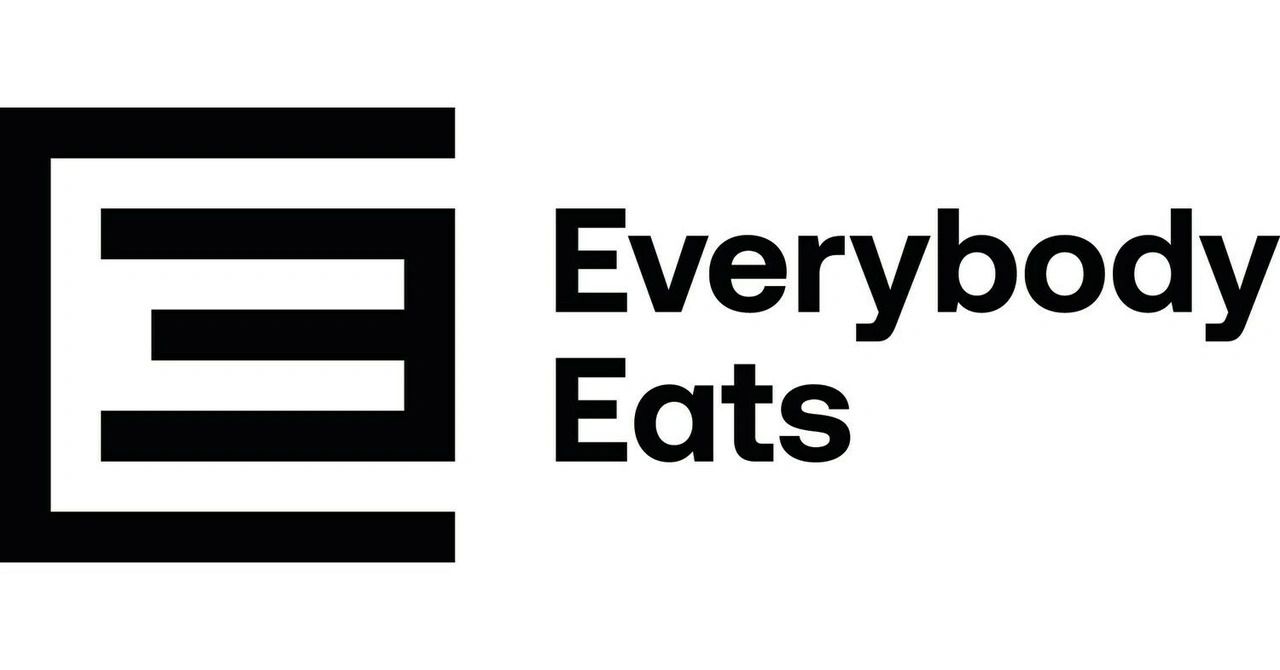
Overview
C3 (Creating Culinary Communities) is a ghost kitchen and virtual brand operator founded in 2019 by Sam Nazarian (CEO of sbe Entertainment, a hospitality group).
C3 took a brand-forward approach: instead of renting kitchens to others, it developed its own portfolio of virtual restaurant brands and partnered with existing kitchens (like hotel kitchens, restaurant chains, and other ghost kitchens) to host them.
By 2022, C3 had built 40+ proprietary brands (notable ones include Umami Burger, Krispy Rice sushi, Sam’s Crispy Chicken, and EllaMia cafe) and was operating in 250+ kitchen locations (ranging from stand-alone facilities to 75 hotel kitchens to mall food courts). C3’s growth was fueled by strategic partnerships and modest funding rounds (around $100M, including investments from Brookfield and even Reef Technology in 2021).
In 2023–2024, C3 became a central consolidator in the industry. Sam Nazarian acquired two major competitors – Nextbite in June 2023 and Kitchen United in early 2024 – and formed a new parent company called EveryBody Eats.
This new entity combines C3’s brand portfolio, Nextbite’s technology and virtual brand marketplace, and Kitchen United’s infrastructure and IP. The combination instantly made Nazarian’s platform one of the most powerful in the virtual dining space.
Financially, C3/EveryBody Eats is private and figures are not disclosed; however, by early 2023 C3 claimed its concepts were in over 1,000 locations (including all partner host kitchens) and that each brand averaged about $1M in sales per outlet – suggesting significant gross revenue across the system.
The consolidation implies a stronger path to profitability through synergies, although exact revenue or valuation is unknown.
Market Share & Reach
With the formation of EveryBody Eats, Sam Nazarian himself noted that the virtual restaurant market had effectively narrowed to two major players: his company and Virtual Dining Concepts (the company behind MrBeast Burger).
In the U.S., EveryBody Eats (C3) now spans a wide geography. C3 initially concentrated on urban hubs like Los Angeles, New York, Miami, and Chicago for its own kitchens and food halls (e.g., the Citizens food hall in Manhattan).
Through partnerships, it extended into secondary markets by placing its brands in existing restaurants. For instance, C3 partnered with chains like TGI Fridays – Fridays added C3’s “Krispy Rice” sushi brand as a virtual offering in some of its kitchens. It also had a partnership to put C3 brands into 800 Reef kitchen locations by 2025 (though with Reef’s challenges, that exact number may not materialize).
After acquiring Nextbite (which itself had a network of thousands of restaurant partners running its virtual brands) and Kitchen United, EveryBody Eats covers a truly nationwide footprint: Nextbite brought strong presence in small markets via virtual-only brands, while Kitchen United brought relationships with brick-and-mortar restaurants and grocery chains.
C3’s model isn’t to own all kitchens, but to be omnichannel – its brands might reach consumers via ghost kitchens, food trucks, hotels, and even retail packaged goods. This gives it a different kind of market share: it’s more about share of stomach (how many virtual brands people order) than number of physical facilities.
Nonetheless, if you count all avenues, EveryBody Eats likely has one of the largest U.S. deployments of virtual dining concepts. It serves dozens of states through various host kitchens and is expanding into non-traditional venues (airports, stadiums, college campuses) with grab-and-go outlets for its brands.
Innovation
C3 is highly regarded for its brand innovation and flexible business models. Rather than one single approach, it has experimented with multiple formats: digital food halls (like its Citizens food hall which invites customers to physically pick up from a variety of virtual brands in one location), traditional delivery-only kitchens, and even full-service pop-ups for its brands.
The newly formed EveryBody Eats is described as a “CPG and culinary brands company connecting new audiences through food brands in exclusive arrangements”. This means innovation will span packaged consumer goods (perhaps selling branded sauces or meal kits) and partnerships with host venues.
A hallmark of C3’s approach is collaboration – for example, partnering with chains (TGI Fridays), hospitality venues (Accor hotels had a deal to host C3 brands for room service), and even collaborating with celebrities and influencers for brand ideas.
Nextbite’s integration adds a strong tech platform for managing virtual brand programs (Nextbite’s system matches underutilized restaurant kitchens with suitable virtual brands to increase their revenue). C3 can leverage that technology to deploy its own brands more intelligently.
We also see innovation in how C3 views physical space: Sam Nazarian has spoken about “visible ghost kitchens” that invite customers in, rather than the traditional hidden “spooky warehouse” approach. This led to concepts like Citizens culinary market where multiple brands cook in an open setting and customers can dine or take out.
By 2025, EveryBody Eats is essentially pioneering an omnichannel food platform – one that doesn’t rely only on delivery apps, but also on in-person experiences and retail channels to make virtual brands more sustainable.
In terms of technology, aside from Nextbite’s platform, C3 likely uses data analytics to spot food trends and spin up new concepts quickly. (For example, if a certain cuisine is trending, they can create a brand around it and launch it across hundreds of host kitchens in weeks.)
Automation is not a core focus mentioned, but efficiency and creative marketing are – C3’s brands often come with catchy themes and packaging designed for delivery.
Employment & Culture
With C3 and EveryBody Eats, the employment landscape is diverse. Originally, C3 itself operated some kitchens (especially its flagship Citizens locations), employing chefs, line cooks, and kitchen staff to produce its branded menus.
It also had a culinary team to develop recipes and a corporate team for brand management, marketing, and partner relations.
Post-acquisitions, the company’s workforce has grown: it absorbed Nextbite’s employees (who were largely in tech, sales, and account management for virtual brand clients) and likely some of Kitchen United’s team (particularly engineers and perhaps regional managers). We can estimate a combined headcount in the few hundreds.
For job seekers, C3/EveryBody Eats offers roles across the spectrum:
- Culinary Roles: There are opportunities for chefs and menu developers to create and refine the many concepts under the brand portfolio. Also, as C3 opens physical food halls or partners with venues, it needs kitchen staff to execute the menus (sometimes hired directly, other times via hospitality partners). Notably, working on a C3 brand can mean handling multiple cuisines in one kitchen – a valuable skill-building experience.
- Operations and Account Management: A significant part of the team manages relationships with host kitchens and ensures quality control. These roles involve training restaurant partners to cook C3’s virtual brands or managing ghost kitchen facilities that house C3 brands. For example, Nextbite had account managers who guided mom-and-pop restaurants in adding a virtual brand; those roles continue under EveryBody Eats, ensuring partner restaurants succeed with the added menus.
- Technology and Marketing: As a modern foodtech company, C3 employs software product managers, data analysts, and marketing specialists. They maintain the ordering apps (like the Go by Citizens app) and analyze sales data to optimize menus. Marketing roles involve growth hacking for new brand launches and collaborations (possibly working with influencers or doing social media campaigns for brands like Umami Burger’s revival).
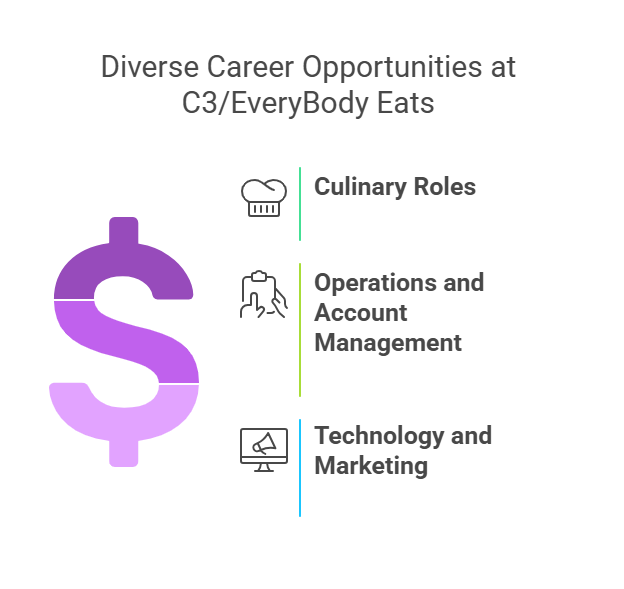
C3’s workplace culture is influenced by its hospitality roots – Sam Nazarian’s background is in high-end restaurants and nightclubs, so there is an emphasis on branding, presentation, and service quality.
This likely creates a fast-moving, creative culture where new ideas (new restaurant concepts, celebrity partnerships) are constantly in development. It might feel less like a traditional tech startup and more like a hybrid of a restaurant group and a tech company.
There have been some growing pains (e.g., C3 reportedly closed at least one of its big food hall locations in early 2023 due to overexpansion), but the general outlook is positive. With fresh investment and the consolidation of Nextbite and KU, EveryBody Eats is in growth mode in 2025 – meaning hiring is likely on the upswing, especially in roles supporting its expanding platform.
Job seekers interested in this company should look for positions titled with “brand coordinator,” “culinary operations manager,” “partner success,” or “digital marketing – food brands.” These could offer exciting careers at the cutting edge of food and tech.
While unique benefits or programs at C3 haven’t been widely publicized, one can expect standard startup perks and the unusual benefit of working with a vast variety of cuisines and concepts. There’s also room for advancement as the company is now effectively an amalgam of three, which could open internal opportunities.
Overall, EveryBody Eats (C3) represents the future-facing side of ghost kitchens – focusing on brand innovation and flexible dining formats – and is an employer to watch in this space.
4. Ghost Kitchens International (Ghost Kitchen Brands)
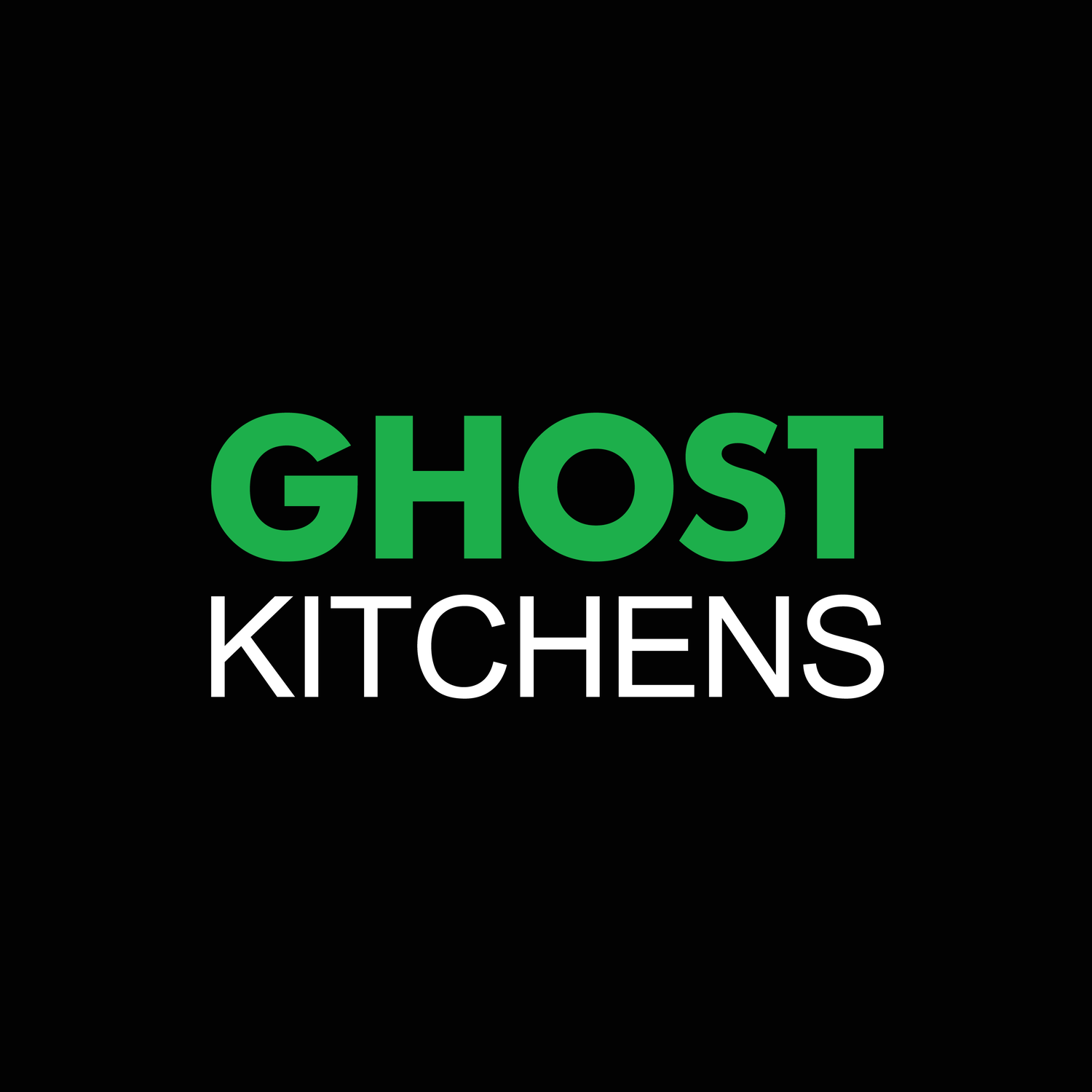
Overview
Ghost Kitchens International (GKI), formerly known as Ghost Kitchen Brands, is a Canada-based ghost kitchen company that has made significant inroads into the U.S. market.
Founded in 2015 by George Kottas, GKI’s model is to operate delivery-centric kitchens that offer multiple well-known brands under one roof. It set itself apart by often co-locating within high-traffic retail locations.
Notably, Ghost Kitchen Brands was the first ghost kitchen to operate out of a Walmart store, and it has since established ghost kitchens inside numerous Walmart supercenters across North America.
As of mid-2024, the company announced a major expansion and rebranding to “Ghost Kitchens International” as it grows beyond Canada/US into Europe. Financially, GKI is privately held with undisclosed revenue, but it has garnered strong interest from investors and franchise partners as it scales.
While smaller than giants like CloudKitchens or Reef, Ghost Kitchens International is considered a top 5 player due to its rapid expansion and unique retail partnerships. It began franchising its model in 2023 and planned to open 30–40 new U.S. locations in 2024 alone, on top of existing units.
This aggressive growth suggests a healthy outlook.
Geographic Reach & Market Presence
GKI has a binational presence, with dozens of locations in Canada and the United States. In the U.S., its footprint started in the Northeast (the first U.S. outlet opened in Rochester, NY in a Walmart) and expanded to states like Georgia, Illinois, Nevada, Texas, and more.
By 2025, Ghost Kitchens International is present in a broad swath of the country, wherever it can partner with large retailers or find dense delivery markets. The Walmart partnership is a cornerstone – imagine going to a Walmart and finding a Ghost Kitchens counter where you can pick up orders from multiple brands (or get them delivered).
This “one kitchen, many brands” concept means GKI doesn’t compete on sheer number of independent facilities, but rather on serving many brands from each location. In one Ghost Kitchen, you might be able to order a burger from Wendy’s, a coffee from Tim Hortons, and a cinnabon from Cinnabon in one go (these are examples of brands they’ve partnered with).
Their slogan is “all your favorite brands in one order,” and indeed customers can bundle items from different menus easily. GKI’s market share in the U.S. ghost kitchen sector is growing, especially in the subset of multi-brand kitchens.
It provides a solution for brands that want minimal operational involvement – many of its offerings are licensed from national chains (for instance, Nathan’s Famous hot dogs, Jamba Juice smoothies, Quiznos subs, Wow Bao dumplings, etc.) prepared by GKI staff.
This gives those brands incremental reach in areas they might not have physical restaurants. In terms of delivery, GKI works with all the major platforms (Uber Eats, DoorDash, Grubhub) and also serves walk-in customers at its Walmart locations.
While still scaling, GKI’s unique approach and partnerships have positioned it as a strong competitor, especially in suburban markets and smaller cities where others might not have a presence.
Innovation
Ghost Kitchens International emphasizes variety and efficiency, and it has started to embrace automation. A recent development is GKI’s collaboration with tech companies to incorporate robots into their kitchens.
In mid-2024, GKI debuted “Adam the Robot” (an automated barista/coffee robot by RichTech Robotics) at a Georgia location to prepare coffee and beverages. Another robot called “Wingman,” a robotic fryer by Nala Robotics, is being used to fry wings and other items at an Illinois location.
These are early steps toward automation to support staff in repetitive tasks, aiming to improve consistency and reduce labor costs. GKI’s core innovation, however, is operational: they have honed the art of running 10-20 different brand menus from one kitchen.
This involves smart ingredient cross-utilization, training kitchen staff to cook multiple cuisine types, and a proprietary ordering system that funnels requests from various brand websites into one production queue.
Additionally, by being inside Walmarts, many GKI locations have a small front-of-house area for pickups and even dine-in seating (something not all ghost kitchens offer). This hybrid model captures some walk-in sales and increases brand visibility.
The company’s rebranding to Ghost Kitchens International and expansion to Europe shows its innovative ambition to be a global “network of kitchens” that big brands can tap into. GKI is essentially building a franchise system for ghost kitchens – where each location can be run by franchisees under the One Kitchen multi-brand model.
This franchise approach is innovative in that it leverages local operators’ insight with a central system’s efficiency. From a tech standpoint, GKI likely uses advanced kitchen display systems and order management to juggle the multi-brand complexity.
Its partnerships with companies like RichTech and Nala Robotics indicate a forward-looking mindset on kitchen automation to complement human chefs.
Employment & Jobs
For job seekers, Ghost Kitchens International presents a range of opportunities, particularly on the front lines of food preparation and management. Each Ghost Kitchen location typically requires a small team of cooks and supervisors who are trained to prepare menu items from perhaps a dozen brands.
This means as a chef or cook at GKI, one might be making a pizza for one order, then a bowl of mac & cheese from a different brand, then a smoothie from another – all in the same shift.
It’s a fast-paced environment that can broaden a cook’s skill set quickly. GKI tends to cross-train its kitchen staff thoroughly. The company is expanding via franchising, so some locations are run by franchise owners who do their own hiring, but the overall demand for kitchen staff, shift leaders, and store managers is high as new units open.
Compared to some ghost kitchens that operate in obscure warehouse locations, GKI’s Walmart-based sites are quite visible and may have more regular hours (aligned with retail store hours) – this can be appealing for workers used to late-night restaurant shifts.
GKI also offers corporate roles from its headquarters (in Toronto and satellite in the U.S.) for those in operations oversight, training, supply chain (they have to source all those different brand ingredients), and business development to forge new brand partnerships. The workplace culture at GKI might be described as entrepreneurial and service-oriented.
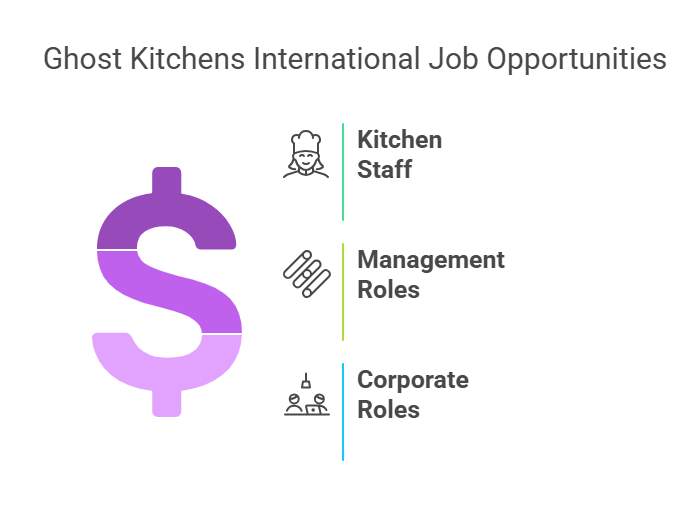
Since many sites are franchised, the culture can vary, but the overarching theme is delivering multiple established brands’ quality under one roof. Employees have to uphold the standards of each of those brands – meaning they adhere to, say, standardized recipes from Ben & Jerry’s for scooping ice cream and also Wendy’s procedures for cooking burgers.
This requires discipline and good training, which GKI provides. A unique aspect is the chance for employees to interact with a variety of beloved food brands without working directly for those companies.
In terms of benefits, GKI has not publicized unique employee programs, but being in Walmart locations might afford some convenience (and possibly employee discounts at the store, depending on arrangements). They are also deploying robots like “Adam” – rather than replace jobs, these seem intended to assist, perhaps allowing staff to focus on more complex tasks.
Employees might gain experience working alongside robotics, which is an exciting resume item in the evolving food industry. The hiring outlook at GKI is robust – as mentioned, 30-40 new U.S. kitchens in 2024 means lots of hiring.
They will need not only kitchen crew, but also regional managers, trainers, and support staff to ensure new franchises meet quality standards. For someone looking to get into the ghost kitchen industry with a more hands-on food role, GKI is a promising option.
It offers the stability of established brands and the excitement of a startup-style expansion. And with its global growth (they launched a EU subsidiary in 2024), there may even be opportunities to work abroad or in cross-border teams.
Conclusion
The ghost kitchen industry in 2025 is marked by consolidation and maturation. The initial boom has given way to a few dominant players – CloudKitchens and REEF providing infrastructure at scale, EveryBody Eats (C3) driving brand innovation, and Ghost Kitchens International bridging retail and delivery.
Each of these top companies has carved out a niche: from CloudKitchens’ massive network and tech focus to GKI’s multi-brand retail strategy.
For job seekers, this translates into a variety of career pathways. Those with a tech or operations background might gravitate toward CloudKitchens or EveryBody Eats, where food and software intersect. Culinary professionals will find opportunities with companies like REEF (though shifting) and GKI, where cooking for multiple brands can accelerate skill development.
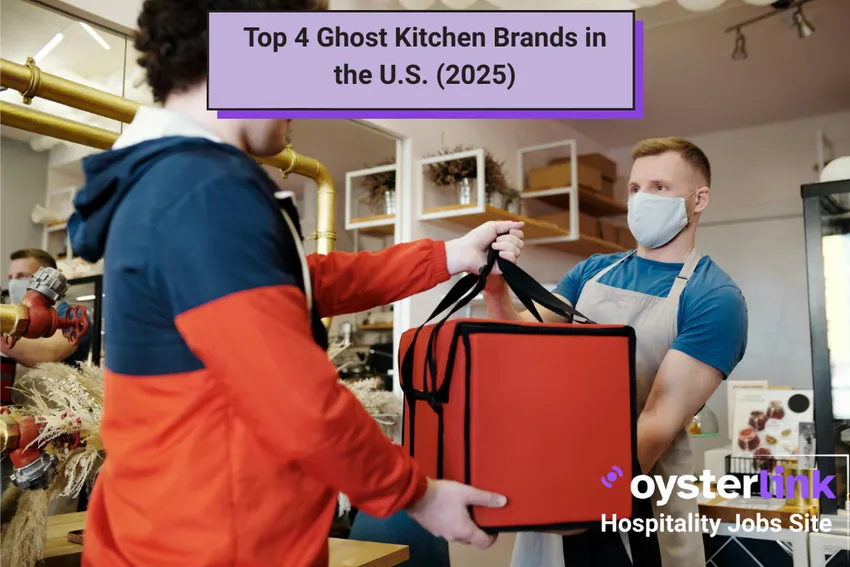

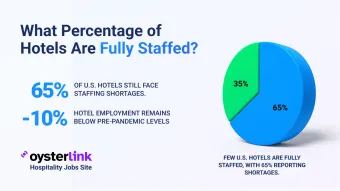
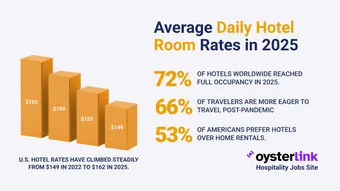
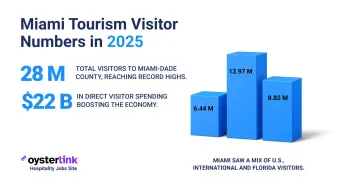
Loading comments...